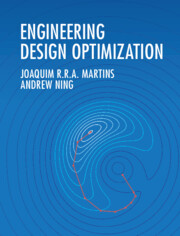Refine search
Actions for selected content:
1550 results in Control systems and optimization
Epilogue
-
- Book:
- Linear Multivariable Control Systems
- Published online:
- 02 June 2022
- Print publication:
- 13 January 2022, pp 649-651
-
- Chapter
- Export citation
Contents
-
- Book:
- Linear Multivariable Control Systems
- Published online:
- 02 June 2022
- Print publication:
- 13 January 2022, pp vii-xiv
-
- Chapter
- Export citation
3 - The [A, B, C, D] State-Variable Model
-
- Book:
- Linear Multivariable Control Systems
- Published online:
- 02 June 2022
- Print publication:
- 13 January 2022, pp 115-166
-
- Chapter
- Export citation
7 - The Optimal Linear Quadratic Regulator
-
- Book:
- Linear Multivariable Control Systems
- Published online:
- 02 June 2022
- Print publication:
- 13 January 2022, pp 309-364
-
- Chapter
- Export citation
Dedication
-
- Book:
- Linear Multivariable Control Systems
- Published online:
- 02 June 2022
- Print publication:
- 13 January 2022, pp v-vi
-
- Chapter
- Export citation
Index
-
- Book:
- Linear Multivariable Control Systems
- Published online:
- 02 June 2022
- Print publication:
- 13 January 2022, pp 677-680
-
- Chapter
- Export citation
Appendix
-
- Book:
- Linear Multivariable Control Systems
- Published online:
- 02 June 2022
- Print publication:
- 13 January 2022, pp 652-670
-
- Chapter
- Export citation
5 - Controllability, Observability, and Realization Theory
-
- Book:
- Linear Multivariable Control Systems
- Published online:
- 02 June 2022
- Print publication:
- 13 January 2022, pp 201-261
-
- Chapter
- Export citation
12 - Multivariable Control Using Single-Input Single-Output Methods
-
- Book:
- Linear Multivariable Control Systems
- Published online:
- 02 June 2022
- Print publication:
- 13 January 2022, pp 613-648
-
- Chapter
- Export citation
8 - H∞ and H2 Optimal Control
-
- Book:
- Linear Multivariable Control Systems
- Published online:
- 02 June 2022
- Print publication:
- 13 January 2022, pp 365-408
-
- Chapter
- Export citation

Engineering Design Optimization
-
- Published online:
- 05 January 2022
- Print publication:
- 18 November 2021
-
- Textbook
- Export citation
Index of Names
-
- Book:
- Network Infrastructures
- Published online:
- 02 December 2021
- Print publication:
- 09 December 2021, pp 256-258
-
- Chapter
- Export citation
6 - Governance
- from Part II - Empirical Explorations
-
- Book:
- Network Infrastructures
- Published online:
- 02 December 2021
- Print publication:
- 09 December 2021, pp 148-176
-
- Chapter
- Export citation
Contents
-
- Book:
- Network Infrastructures
- Published online:
- 02 December 2021
- Print publication:
- 09 December 2021, pp vii-vii
-
- Chapter
- Export citation
Part I - Conceptual Framework
-
- Book:
- Network Infrastructures
- Published online:
- 02 December 2021
- Print publication:
- 09 December 2021, pp 13-122
-
- Chapter
- Export citation
3 - Technology in Three Dimensions
- from Part I - Conceptual Framework
-
- Book:
- Network Infrastructures
- Published online:
- 02 December 2021
- Print publication:
- 09 December 2021, pp 76-92
-
- Chapter
- Export citation
References
-
- Book:
- Network Infrastructures
- Published online:
- 02 December 2021
- Print publication:
- 09 December 2021, pp 240-255
-
- Chapter
- Export citation
Subject Index
-
- Book:
- Network Infrastructures
- Published online:
- 02 December 2021
- Print publication:
- 09 December 2021, pp 259-266
-
- Chapter
- Export citation
8 - Taking Stock, Looking Ahead
- from Part II - Empirical Explorations
-
- Book:
- Network Infrastructures
- Published online:
- 02 December 2021
- Print publication:
- 09 December 2021, pp 206-236
-
- Chapter
- Export citation
5 - Structures
- from Part II - Empirical Explorations
-
- Book:
- Network Infrastructures
- Published online:
- 02 December 2021
- Print publication:
- 09 December 2021, pp 125-147
-
- Chapter
- Export citation
